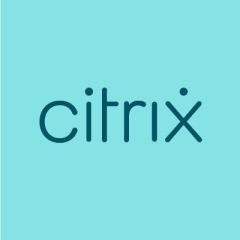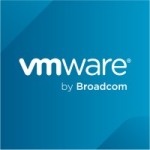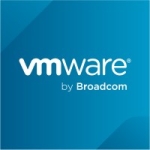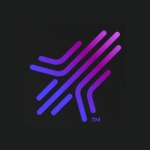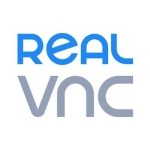What is our primary use case?
We have a ton of use cases. Ever since COVID-19 happened, my organization sent everybody home to work. Using Citrix Virtual Apps and Desktops has been absolutely critical in keeping our core business functionality going as well as keeping everybody happy, like our customers.
We are a utility. Within our municipality, we are considered an essential service. As an extension of that, using Citrix Virtual Apps and Desktops is absolutely critical to making sure that customers are happy, because we keep the lights on, literally and figuratively, for our customers.
We currently use Citrix across the board. With people working from home, whether they're on a laptop that's maintained by our organization or a personal laptop, they use Citrix Virtual Apps and Desktops primarily. We have about 98 percent of people using it today. The use cases vary from actual developers using EDIs to customer service agents who answer the phone for actual customers of my organization. We also have an IT support staff.
We have all kinds of use cases today, pretty much right across the board. With the agile and dynamic way that Citrix technologies are, we are able to solve each one of those use cases quite well. It is quite impressive how it has all come together
What I currently use in my organization is Citrix Cloud. Within Citrix Cloud, we use Citrix Virtual Apps and Desktops as a service. So, we are fully-baked into the cloud in regards to that. Being in Citrix Cloud, the version gets increased on a regular basis. I'm not sure where we are at right now, but it's always pretty new.
How has it helped my organization?
My organization is an essential service. It has been very conservative when it comes to any lockdown policies within our organization. So, they sent people home very early, and it will be awhile before people are working from the office again. Keeping the lights on at my organization, both figuratively and because they are a utility, is absolutely critical and all of that work right now is being done on the backbone of Citrix Virtual Apps and Desktops. Citrix Virtual Apps and Desktops with its easy ability to connect via my organization's resources regardless of what device that the user is working on, having that ability to connect from high latency or low latency connections, having consistency of experience when logging in is super critical, and having the analytics to give us data around performance and security has been fantastic because we have been able to make tweaks and optimizations as we go after putting so much load on our Citrix infrastructure.
All of those things combined have been super important in adding value to my organization and how we work now. Before COVID-19 and work from home happened, my organization had approximately 500 concurrent sessions connecting at once. Now, we are up to (because of work from home and COVID-19), we are up to 2,000 connections at once. So, the whole organization is pretty much going through Citrix Virtual Apps and Desktops, utilizing those services. Having the agility to be able to build out our infrastructure to match the increase in usage has been super key as well. This means technologies within Virtual Apps and Desktop service, such as Machine Creation Services (MCS), and having the ability to build Virtual App and Desktop servers in Azure or on-premise as needed. This has also been super critical because as our user base has grown by four times, then we have had to grow our resources within our Citrix environment by four times.
Remotely, it allows the end user to have the flexibility to be able to access my organization's resources on whatever device they are on, whether it be an iPhone, Android, device that my organization gave them, or their own personal laptop. That is number one. It starts there around that end user experience, giving those users that flexibility to use whatever endpoint device that they want. Around performance and metrics, the Analytics are key. It allows us to identify any pain points that users might have and make quick actions around those things, whether it be increasing resources on some servers/Virtual Desktops or looking at our group policies to optimize them some more. That has been pretty critical for us.
Overall connectivity has been great. Citrix is an industry leader in remote access protocol. This allows anyone from a super high latency connection to fiber Internet connectivity to be able to access our resources and have a similar experience because of the protocols that Citrix uses. It is all of those things combined that allow us to offer end users the best experience that we can. This is really piggybacking off of the mature technologies that Citrix has to offer.
Our organization sports Zero Trust in a few different ways, but we have a ways to go to that model of security. Citrix will be pretty crucial in that. Whereas, we have those capabilities there to offer conditional access, in regards to our end users, we're just not there yet. However, just having the capabilities there and knowing that we can implement them when my organization is ready. This is really crucial because that is one roadblock that we don't have to worry about. The technology is there to be able to do it. It is just a matter of figuring out how we are going to implement those Zero Trust policies, then implementing them when the time is right.
I would describe the solution's centralized policy control and distributed enforcement as robust and agile. I would describe the policies around it as being super secure and well-thought-out. They have the ability to implement policies, getting those policies applied to the sessions and devices that we need them to in a super quick time, which is critical.
Citrix has always been super-focused on being platform agnostic. That has been one of the core tenants of their approach to their technology. I keep on going back to Citrix being flexible with whatever technology that their clients are on, and that certainly is the case with my organization. That is super critical. We know that whatever decisions are made in our organization, in terms of where our resources go, Citrix will be there to support us around that. Having that layer of security offered around those analytics and ability to action items based on those analytics right away is super key.
The utilization of Citrix Virtual Apps and Desktops has been highly secure. Right from the get go, we have policies in place that prevent anyone from copying data from the data center, application servers, and network share drives to their client device, then back the other way. We have that ideal perfect segregation between corporate data and personal endpoint devices. So, we have had no concerns in regards to security, because of these policies, features, and security are inherently built into Citrix Virtual Apps and Desktops.
Citrix Virtual Apps and Desktops are a part in our business continuity strategies: 100 percent. With the agility that it provides, it is able to connect to whatever resource locations are out there, whether it be Azure, AWS, or on-prem. It has been super critical in allowing us to build out that business continuity strategy now. Over the course of the last year, we have built out our business continuity strategy a great deal. What that looks like is that we still manage everything through our central Citrix Cloud service, but our resources are equally split between two of our on-prem data centers, Active-Active. So, we have an Active-Active Citrix strategy in place today. Being able to build two to three years down has really been a huge value to my organization, ensuring that whatever happens out there, we will be able to keep the lights on and keep people working.
What is most valuable?
Overall, Citrix Virtual Apps and Desktops are highly agile and supported on pretty much whichever platform that you're on. So, the features of Citrix Virtual Apps and Desktops that we find most valuable in my organization overall are the agility, where we can deploy Citrix Virtual Apps and Desktops at my organization. We have resources in Azure, primarily, but we also have resources in AWS and on-prem. We have all kinds of different operating systems as well. We have users who need to access applications on sort of a one-off basis. We also have users who need to access full-blown desktops that live within our data center, either in Azure or on-prem. Just having the ability to serve all those use cases and needs by using Citrix Virtual Apps and Desktops is absolutely critical.
Another thing that we really enjoy about it is the fact that we're in Citrix Cloud. Using the service within Citrix Cloud really gives us the ability to not worry about the infrastructure components, because it is a software as a service methodology. Citrix really worries about what those updates look like and ensures that the uptime is as high as possible. This allows my team to focus on the high value items, which is the end user, end user security, and user experience. I think having Citrix Virtual Apps and Desktops as a service is really critical for us to do what we need to do and really focus on the things that are important to us as an organization, and we were able to do that quickly, rapidly, seamlessly, and without any user disruption.
When COVID-19 happened and other companies were faced with sending their workforces home, it was very quickly recognized that organizations, certainly in the city where I live, who weren't using Citrix technologies were really struggling with having their folks work from home. However, it has been widely touted within my organization, when we sent everyone home, there were no disruptions whatsoever. We were able to quickly and seamlessly build out and up our environment to suit the company's needs. All of those things have been of super high value, allowing our company to operate.
The third thing that we find absolutely valuable and critical are the Analytics. Citrix has been maturing their Analytics platform over time. It is in a mature state now where we are able to highlight any user's pain points around user experience, security issues/vulnerabilities or bad actors, and security scenario concerns that might be out there. This has been very important for us, as it allows us to get that data into the hands of the right teams so they can action it as quickly as possible. This way, we can offer a safe, secure, highly capable user experience.
We use Citrix ADC. Currently, that is where all of the traffic flows in for us. Anybody connecting to Citrix today flows in through a Citrix ADC environment. Through that, we are able to monitor all the traffic, where they are coming from, and how often they come through. So, we have our security analytics tools that tie into that information quite tightly. Therefore, any bad actors or anomalies get quickly identified, then they get quickly actioned by our operational team as soon as IT security makes us aware of them.
We also use Remote PC Access, which has been a huge bonus for us. It is number one from a security perspective. Our employees can sort of connect through to our Citrix portal and access desktops sitting in the office in a safe and secure manner. We have segregation and data leakage policies in place, which prevent any data from flowing outside of our organization. So, it is quite secure. If you think of it from a full-on perspective, we have Citrix Cloud users connect into our Citrix portal, then we have Analytics there monitoring for traffic and any anomalies or bad actors flowing through our Citrix Cloud implementation, where we have more analytics baked in where we can identify any sort of scenarios that might pose a danger to my organization. To the actual endpoint itself within our building, there are rich analytics, which are being drawn, and can help inform us around any sort of security concerns that might be going on.
Citrix Virtual Apps and Desktops provide everything for us within one integrated platform. With COVID-19 and working from home, it has become clearly apparent that all the use cases currently in my organization have been absolutely met with the services and capabilities that Citrix Virtual Apps and Desktops provide. This comes down to our users having a better end user experience and us having the capability of having analytics around that we can tweak and optimize as we go. The ease of manageability for Citrix Virtual Apps and Desktops is huge. We are able to get away with doing a much better job at managing that environment now with less people than we did before.
What needs improvement?
I think improvement around the Analytics piece is super important. There has been a lot of maturity over the last year in that area, though a lot more needs to be done. Also, a lot more of the value of those Analytics needs to be sold to end users. Citrix is working on a lot of things that are ahead of the curve and a lot of organizations aren't quite there yet with implementing those technologies and capabilities.
Another area that Citrix could improve on, which has nothing to do with the technology, is just selling to its customers, e.g., the importance of taking advantage of those capabilities that are right within the services that they already pay for.
These are two key areas that Citrix could improve upon and are kind of an extension to Citrix Virtual Apps and Desktops.
For how long have I used the solution?
Citrix Virtual Apps and Desktops has gone through some sort of an evolution over the years. Personally, I have been using it for a good 17 to 18 years altogether. In its current iteration of using Citrix Cloud and more of a Citrix Virtual Apps and Desktops as a service, I have been using that for the past five years.
What do I think about the stability of the solution?
Citrix Virtual Apps and Desktops stability is completely robust. With Citrix Cloud, Citrix manages all the infrastructure, taking care of the availability. They take care of any business continuity worries. We really just need to focus on our core skill sets. It has been fantastic.
What do I think about the scalability of the solution?
In terms of scalability, Citrix Virtual Apps and Desktops have a lot of technologies baked in there that allow an organization to scale up or down, as required. Further, leveraging Azure for scalability has added value to our organization. For example, pre-COVID-19, we had very few resources in Azure. We had some Virtual Desktops and no application servers. When COVID-19 came along, we knew people were going to be home. We knew that we had to ramp up very quickly. We fully leveraged MCS to be able to scale. Being able to take a single image and build 400,000 Virtual Desktops, all within minutes, was second to none in terms of any other technology out there that we could have used. The scalability to be able to do that in Azure, where we really don't have to worry about storage and compute power because Microsoft does that for us, was fantastic. It was almost like giving our environments steroids. It has been amazing in terms of that scalability. Now, as people start coming back to the office, we can just as quickly scale down so the compute and resource costs in Azure aren't so great anymore.
We have really leveraged Smart Tools to be able to scale up and down. They let us see what the cost looks like, because that is always a consideration. An organization always wants to be able to build the right amount of resources to serve our end users needs, but not more than what is actually needed, because that will just cost an organization more money. The Analytics, Smart Tools, and Machine Creation Services are allowed to do all of these things in a transparent way as well as scale up and down very quickly.
How are customer service and support?
The technical support has been fantastic. We have the ability to call into our Citrix technical support folks and create tickets within the Citrix Cloud console. The ease of creating tickets has been great. The support that we have been given around issues ranging from very small to very large issues has been fantastic. That support has been even more motivated by our account rep who lives in the city that we are at and we have a good rapport with, as well as our sales engineer. Between the partnership of our account rep, sales engineer, and the IT supports folks, we have had a great experience. It is something that we never hesitate to utilize. They have been great consultants whenever we have had to ask general questions. They have been great troubleshooters whenever we have had minor or major issues. Across the board, it has been really great. We are super happy with the support.
Which solution did I use previously and why did I switch?
We had a previous iteration of Citrix Virtual Apps and Desktops, which was a XenDesktop farm. We have just continued to grow with Citrix over the years as Citrix evolved.
We have tried VPN solutions and Microsoft Remote Desktop, but none have provided the agility, robustness, and stability that we have needed to give our end users when it comes to doing their core functions.
In terms of security, VPN definitely raises some eyebrows. You have endpoints out in the wild at people's homes and cafes utilizing a VPN connection that is a full tunnel into our data center. So, if that device becomes compromised, our data center can rightly become compromised. That was a huge concern for us. That is what Citrix Virtual Apps and Desktops provide for us: the segregation between our corporate data and the endpoint device.
Remote Desktop uses RD Protocols, which are not nearly as mature as the protocols that Citrix uses. What we are seeing are stability issues, particularly during high latency and connections. We see jittering when it comes to videos. We just don't have that robustness when it comes to the connectivity that we do with Citrix Virtual Apps and Desktops. So, in my experience with other organizations as well, Citrix Virtual Apps and Desktops is just a really mature product that has been evolved over many years and continues to evolve. Citrix tends to always go back to those core capabilities, which have been super key for organizations like mine to be able to do as well as we can in such a distributed workforce.
How was the initial setup?
The initial setup is completely straightforward. We are in a Citrix Cloud environment, and that means that Citrix manages the entire bulk of the infrastructure components of our Citrix Virtual Apps and Desktops farm. On-prem, what my folks really need to manage, are those high level things within the service of Citrix Cloud, like which apps get installed on which desktops and how we deploy absent servers. This is pretty high level stuff. There are just some servers that act as connectors to Citrix Virtual Apps and Desktop service, which are on-prem and in our Azure tenant that just allow that connectivity to Citrix Cloud. There is no maintenance whatsoever; they're evergreen. They get updated all the time. We basically set it and forget it when it comes to the Citrix connectors.
Because Citrix Cloud supports any kind of operating system out there, all we really need is an agent running on each of the endpoints, then that's it. We run the agent and make sure it is kept up-to-date. On the endpoints, we make sure that the agents are connecting to our Cloud Connectors. Then, Citrix basically does makes sure that infrastructure is up, running, and available.
For the deployment, not much staff at all was required. I was the main technical lead when it came to the deployment. Citrix Consulting services just needed some inputs that were pretty specific to the organization itself. Those types of inputs included what the environment looks like, service accounts, etc. That low down deep technical stuff is really specific to each organization.
Citrix Consulting services did everything else. They did the solution design and the implementation itself. They did the additional training with additional individuals, so it was an easy implementation from my organization's perspective. There was not much overhead at all. That's why we go to Citrix time and time again for these implementations.
When you are in my position as a leader, finding a technology, such as Citrix Virtual Apps and Desktops, that you believe in, which does a great job as well as will be there for whatever future plans your organization has, that is super key. You have to keep selling that technology and make sure it has a footprint within your organization as much as possible, because that's technology you can rely on when the time comes and everybody has to work from home, or things happen around natural disasters. So, it is super critical.
What about the implementation team?
Our deployment took probably three months altogether, not very long at all. For Citrix Cloud, we had Citrix Consulting services come in and do that for us. We have always been super happy with Citrix Consulting services. They have such fantastic people. They have such huge talent on their bench. They help organizations, such as ours, do what we need to do in the Citrix space. So, we had them come in, and for three months, they implemented the product. It was super straightforward. Everything was documented.
When it came time to hand that service off to our operational staff, it was super easy. The overhead of managing Citrix Virtual Apps and Desktops is way less than it was when we had our on-prem farm with Citrix. So, we are super happy with the ease of manageability and the implementation that took place as well as the professionalism and maturity of that implementation. Things went super smoothly, and we couldn't have been happier.
What was our ROI?
It has absolutely saved the organization money. If you think of just overall support of having all that support and manageability within a single pane of glass, that has been super critical. We have two people who manage the workloads of 2,000 people working from home, and that's critical and super key. That saves us time, effort, and money. With Citrix Virtual Apps and Desktops being so mature around being centrally-managed, we are able to send people home and not need to have any consideration for what devices that we need to send home with them. Whatever device they have on their desk, they can take with them. We know what will be fully supported when they try to connect to our Citrix Virtual Apps and Desktops service when they get home. That has also saved us a lot of time, money, and support.
I just can see the tremendous value that it has given us. The stability that the Citrix Virtual Apps and Desktops has given people to be able to keep up their productivity and mitigate their downtime. In theory, I can see it with my own eyes every day, but we haven't actually crunched those numbers. That would be something I would be very interested to see.
What's my experience with pricing, setup cost, and licensing?
In terms of pricing with the Citrix Virtual Apps and Desktops, I think it has gotten better over the years. Citrix has found more dynamic ways to be able to revive licensing models that fit many different scenarios that organizations have. We have been able to evolve our own licensing over the years to accommodate our situations between concurrent versus user device licenses. Now, when we move into the Citrix Workspace realm, we definitely have some awesome options there.
I think Citrix is always willing to negotiate different models. They try to offer their clients flexible options to license their products. We have been very happy with the way that our licensing has worked out with Citrix.
What other advice do I have?
For anyone who is thinking about getting into Virtual Apps and Desktops and utilizing that in their organization, I would really start thinking about what use cases would make the most sense. In the past, Citrix has been very heavily focused on the remote worker. So, at other organizations that I've worked with, we've had people distributed in the field: working in mines, the fields, and at oil and gas plants. Having that centralized management for people who are working out in the field is a critical use case. Think about the workers in your organization who meet that use case and it is a no-brainer in terms of trying out the technology with them. There are other use cases as well, like developers and other business units who may require a second or third desktop for testing and development work outside of their primary machine that may be managed by their organization.
Often organizations have third-party contractors who come in and do work for that organization. Having that segregation of data between what is in the data center and what is on the endpoint is critical when third-party contractors come in with their own company's laptops and want to do work for your organization. Having the ability to ramp up or down and give or take away access very quickly without a worry for security and data leakage is another no-brainer use case.
It all comes back to use cases and which ones you start implementing. As organizations get more used to this technology, they will see the true value in it build very quickly.
When you look at this pandemic, all our use cases had to start using Citrix Virtual Apps and Desktops in my organization. They did this without any downtime whatsoever. That has been super key. Another critical use case that people don't often think about that you're going to need to be ready for is a natural disaster that may hit your company where people can't work from that office anymore. Citrix Virtual Apps and Desktops provide that readiness for you right out of the gate.
We do have the capability today to provide intelligent analytics for proactive detection of malicious user behaviors. However, it's not a capability that we're utilizing a great deal. Over the next year, that's certainly something that we're going to be building more into our strategy. I think that's the real critical thing when it comes to Citrix Virtual Apps and Desktops; it's not a stagnant type of technology. Citrix invests a lot of development in maturing this product and building it out along with more capabilities. So, a lot of companies, like ours, are playing catch up with a lot of these capabilities. Knowing that Citrix is putting research and development in their product as much as they are and we have those capabilities, that barrier is non-existent when it comes to the technology. This is really critical because now we are able to plan and implement those types of strategies in a timeline that is best for us, because we know that the technology will be there to serve that.
We do have a posturing policy in place today that does a sort of loose assessment of what the endpoint looks like, providing access accordingly. That posturing is done at the Citrix ADC level. The engine that does that has been pretty important in allowing us to ensure that only those devices that we allow into our organization get into our organization and get access to only the resources that we allow them to get access to.
Admittedly, we haven't really gotten too far into the behaviour analytics capability at my organization. I do see it as supercritical. It is a capability that we want to build into our solution over the next year, but it's not something that we are using right now. From what I have seen, it will serve all of our needs. Citrix Virtual Apps and Desktops, its analytics, and security policies will allow us to quickly identify any anomalies in an automated type of fashion using AI, which will allow the technology to act upon those anomalies without any human intervention. I think that's key. Whenever you see huge outbreaks in vulnerabilities at organizations, it always tends to come down to that human intervention and the delay in an actual human doing that analytics themselves by assessing and acting. Whereas, Citrix technologies, within the Virtual Apps and Desktops space, have those capabilities already automated. That will be really important when my organization moves to implementing this methodology in the coming year.
Another capability that we could be using that we're not currently today is the solution’s automated analytics. The infrastructure has been maturing at my organization, and we are moving into a place where we can utilize these technologies and capabilities. Right now, we're not really using it, but I do recognize its value and that's something that my organization will definitely be looking at over the next year.
In terms of identifying malicious actors within my organization, we have only implemented it and are using a very tertiary level. However, as my organization matures more than moving into those types of capabilities over the next year, that is definitely something else that we'll be able to take advantage of.
Our Citrix Virtual Apps and Desktops environment is very well-organized. About 98 percent of our organization currently relies on Citrix Virtual Apps and Desktops to keep the lights on and our business going. As the situation evolves with COVID-19 and work from home programs, where some people come into the office and some people continue working from home on an ongoing basis, we will continue to leverage these technologies. I think we are going to continue to evolve the technologies that Citrix Virtual Apps and Desktops use as we go. As an organization, we have serious eyes on Citrix Workspace. In the near, if we can use the Citrix Workspace and all its additional capabilities in conjunction with Virtual Apps and Desktops, I see that as a natural evolution of our Citrix environment. That will mean a better, more secure experience for the end-user community and organization as a whole.
The biggest lesson that I have learned from using Virtual Apps and Desktops is how truly dynamic and scalable it is. COVID-19 and working from home has really put that environment and technology to the test, putting everyone to the test. It has allowed us to scale up as our user base has scaled up. The licensing model has allowed us to have that flexibility to scale up as needed. We have had a very small learning curve, as people have just picked up on the technology. They know exactly what to do because it has been very intuitive in that regard.
I would probably rate this solution between an eight and nine (out of 10). That rating would certainly be way above and beyond any other remote technologies that I have used in the past.
Disclosure: PeerSpot contacted the reviewer to collect the review and to validate authenticity. The reviewer was referred by the vendor, but the review is not subject to editing or approval by the vendor.

